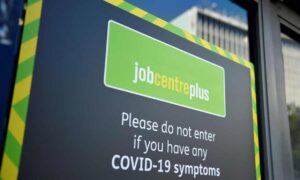Close to half a million redundancies are likely to be announced in the autumn, although the number could end up exceeding 700,000, according to a study that lays bare the scale of the Covid-19 jobs crisis facing the UK.
These job cuts are on top of 240,000 redundancies officially recorded by the government up until June. That means the total redundancy figure for 2020 could top one million.
In a bleak warning, the Institute for Employment Studies (IES), which published the analysis, said the number of jobs likely to be lost “will almost certainly exceed anything we have experienced in at least a generation” – far exceeding the peak reached in the last downturn just over a decade ago and the highest since at least 1995.
With the autumn budget weeks away, it is calling for urgent measures to support those affected, stimulate employment growth and provide targeted help to viable firms.
The figures come after official figures issued last month showed that Britain had entered the deepest recession since records began, with the UK economy shrinking by more than any other major nation during the coronavirus outbreak in the three months to June.
So far, official data on redundancies is only available up to June and shows that 240,000 people were made redundant in the first six months of the year.
The IES is predicting that there were 445,000 redundancies between 1 July and 30 September, with most of them occurring in August and September. It reckons there will be a further 205,000 between October and December.
A figure of 445,000 would significantly exceed the highest quarterly figure recorded during the last crisis, when there were an estimated 305,000 redundancies during the first quarter of 2009. “It would also be comfortably the highest level since this data series began in 1995,” said the report, which is based on an analysis of the relationship between notified and actual redundancies.
The IES said there was clearly a risk that job losses would exceed its central scenario and that its upper estimate was of 690,000 redundancies over the three months from July to September – rising to a peak of 735,000 in the three-month period from 1 August to 31 October.
The study showed it was likely that up to half a million people, “and potentially significantly more”, were facing the prospect of losing their jobs.
”Sadly, much of this restructuring appears now to be inevitable and reflects both significant structural changes (either a result of, or accelerated by, the pandemic) and the damage already done to those firms most affected by the crisis,” it added.
However, the IES director, Tony Wilson, said: “We can do a lot more to minimise the job losses and support those who are most at risk.”
Not all of these redundancies were inevitable, he added. “Although most of those who were furloughed by their employers are now back at work, there are still many parts of the economy where perfectly viable businesses cannot bring people back because of the ongoing disruption caused by the pandemic. So we need tightly targeted support to help these firms ride out the next few months, where they can commit to not laying staff off.”
The government’s furlough scheme is due to come to an end on 31 October, which could spark a fresh wave of redundancies. Pressure has been mounting on the chancellor to rethink this decision and delay the ending of the support scheme.
Responding to the IES findings, the government highlighted its Kickstart scheme to incentivise training and apprenticeships, and the job retention bonuses to encourage businesses to bring back furloughed employees.
“Supporting jobs is an absolute priority, which is why we’ve set out a comprehensive plan for jobs to protect, create and support jobs across the UK by providing significant, targeted support where it is needed the most,” a spokesman said.
Meanwhile, insolvent companies across all sectors of the UK economy that were unable to pay their debts landed taxpayers with a bill for almost £250m during the first six months of 2020, despite the various government job support schemes, according to separate data.
Between 1 January and 30 June, the Insolvency Service paid out a total of £244m to individuals after their employer went into administration, liquidation or another form of corporate insolvency, according to data obtained by the real estate adviser firm Altus Group via freedom of information rules.
If someone has been made redundant and their employer is insolvent, they can apply to the Insolvency Service for the money they are owed.
